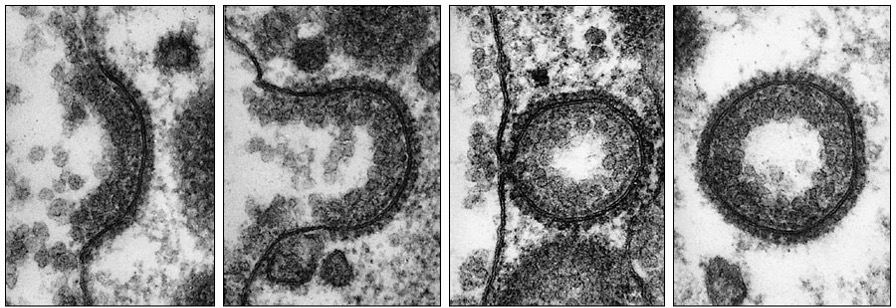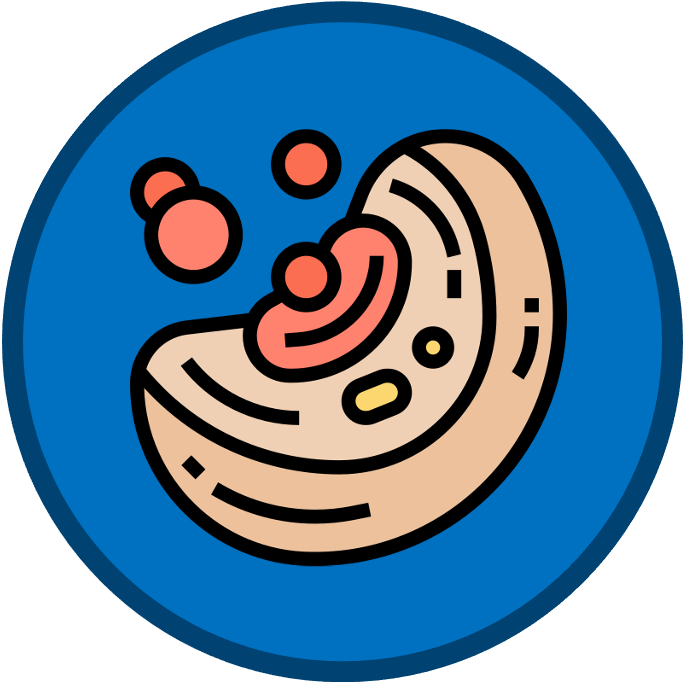

Vesicular Transport
The membrane is principally held together by weak hydrophobic associations between the fatty acid tails of phospholipids
-
This allows for the spontaneous breaking and reforming of the bilayer, as the phospholipids can move around and be rearranged
-
As a consequence, materials can enter or leave the cell without having to cross the membrane (membrane breaks and reforms around the material)
-
This method of transport requires the involvement of vesicles and is an active process (requires ATP hydrolysis but is not active transport)

Endocytosis
Endocytosis is the process by which large substances (or bulk amounts of smaller substances) enter the cell without crossing the membrane
-
An invagination of the membrane forms a flask-like depression which envelopes the extracellular material
-
The invagination is then sealed off to form an intracellular vesicle containing the material
There are two main types of endocytosis:
-
Phagocytosis – The process by which solid substances are ingested (usually to be transported to the lysosome)
-
Pinocytosis – The process by which liquids / dissolved substances are ingested (allows faster entry than via protein channels)
Endocytosis can also be receptor-mediated (involves clathrin-coated pits) – this allows the cell to control the type of content entering
Endocytosis (TEM)


Exocytosis
Exocytosis is the process by which large substances (or bulk amounts of small substances) exit the cell without crossing the membrane
-
Vesicles (typically derived from the Golgi) fuse with the plasma membrane, expelling their contents into the extracellular environment
-
The process of exocytosis adds vesicular phospholipids to the cell membrane, replacing those lost when vesicles are formed via endocytosis
Exocytosis





